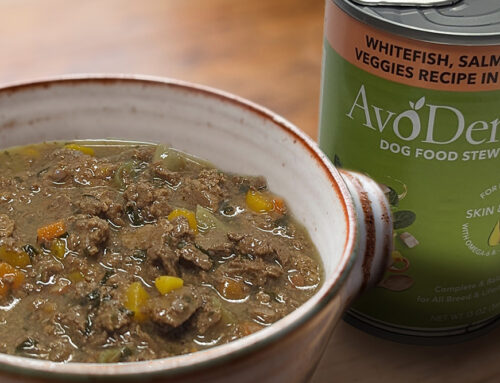Whether you’re a first-time dog owner or a seasoned pet parent, getting a new puppy is a delightful decision to make. Between bonding with your dog through training, and finding out their favorite meal, there are plenty of exciting and unpredictable experiences to anticipate. With those fun aspects also comes an important responsibility to provide proper nutrition for your pup, ensuring that they develop in a healthy and balanced way. Keep reading for tips on what to feed your puppy, how often, and where to start.
Developmental timeline: how often to feed your pup
- 0 – 6 weeks: Your puppy should still be nursing from his mother on their own schedule. At the 4 to 6-week stage, you can begin weaning him off with a puppy formula.
- 6-12 weeks: Pet owners should begin feeding the puppy 4 times a day, predominantly puppy food while allowing for milk early on.
- 3-6 months: At this point in development, you may notice some physical changes in your puppy. By 12 weeks, his or her roundness should be less prominent, and you can begin increasing their portions while decreasing the frequency to 3 feedings a day. If these physical changes haven’t happened for your puppy, consult with your vet to determine next steps in their feeding schedule.
- 6-12 months: This is the typical age range for sterilization procedures, which can impact your puppy’s appetite and nutritional needs. It’s widely recommended to switch your puppy to adult dog food after they’ve been spayed or neutered, and to reduce their feeding to twice daily. However, if your dog is a picky eater or developing at an unusual rate, it’s safer to keep feeding a diet of puppy food for too long than not long enough.
- 1 year and beyond: You can begin feeding your puppy 2 half-portions of adult dog food per day.
What should you feed your puppy?
The differences between puppy vs. adult dog food emphasize the importance of a slow transition while feeding your puppy. On the dry food side, puppy kibble is small enough to sustain your pup without creating a choking hazard. Puppy food also needs to be formulated with respect to their unique nutritional needs during development.
AvoDerm Natural® puppy food is crafted with real chicken as the first of many high-quality ingredients, providing a balanced and tasty source of protein, fat, vitamins, and other nutrients. Our Chicken & Rice puppy food formula also includes DHA and other important fatty acids from natural avocados.
Once it’s time to feed your puppy a diet of adult dog food, it’s important to find a brand and product that supports their complete nutritional needs. Large breed dogs, for example, will do better on a special formula that encourages slow growth. Puppies need twice as many calories in their diet as adult dogs, but an excess in protein or calcium could lead to a growth spurt that causes further health issues down the line.
Small but hefty breeds like pugs also need special caloric restrictions to help prevent hip dysplasia and other breed-specific health issues. If this is the dog breed that has captured your heart, ask your vet for guidance in navigating these guidelines once you’ve welcomed your new pug home.
Other puppy feeding tips:
- Avoid feeding puppies from the dinner table: Feeding dogs human food is a common tactic employed to win their favor. While all dog owners should be advised that feeding your dog from the table can form a habit of begging, this is especially important for parents of a new puppy. Habits that are picked up in the early stages of a puppy’s development can later become the hardest to break.
- Be consistent in a puppy’s feeding schedule: Providing meals at the same time each day is an efficient way to encourage structure for your pup. During house training, taking your puppy outside after each meal (plus once before bed) can help him get used to longer intervals between elimination.
- Watch out for puppies that eat too fast: Eating too quickly creates a choking hazard for your pup, and may leave them susceptible to lasting health risks. But between food puzzles and slow-feeder bowls made for puppies, and the baking sheet in your own oven, there are plenty of solutions to prevent your puppy from taking too many large gulps too quickly.
The decision to bring home a new puppy takes ample research and consideration, but none of that makes it any less exciting. Prep your pantry with an AvoDerm Natural® puppy dog food formula, packed with high-quality ingredients to provide real-food taste and nutrition.
SOURCES
- Alt, Kimberly. “How Much Food Should I Feed My Puppy?” CanineJournal.com, 1 Jan. 2018.





